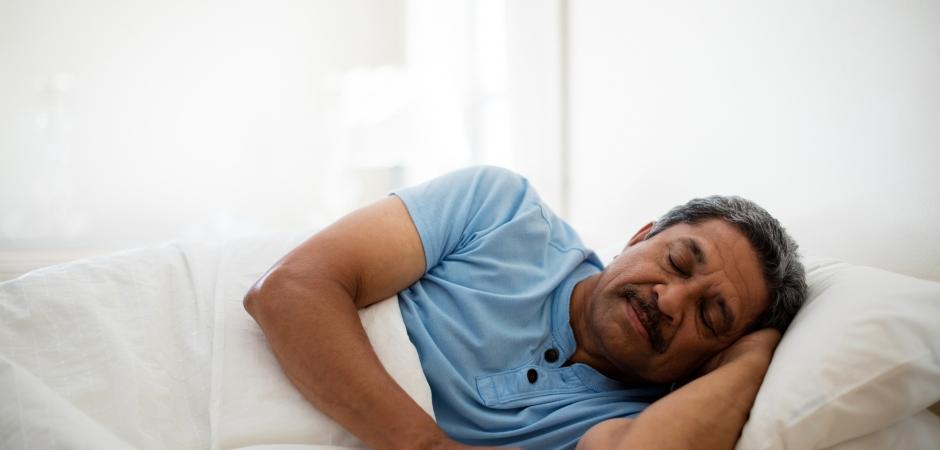
What is obstructive sleep apnea (OSA)?
One of the most common and life-threatening sleep disorders is obstructive sleep apnea, where a person breathing is repeatedly disrupted during sleep due to complete or partial airway obstruction. Each time breathing stops, normal sleep is disrupted to allow the body to resume breathing. This may happen hundreds of times per night, with the sufferer having no recollection of sleep disturbances. Obstructive sleep apnea may lead to high blood pressure, cardiovascular disease, weight problems or other health problems.
What are the signs or obstructive sleep apnea?
Signs of obstructive sleep apnea (OSA) include:
- Frequent urination at night
- Morning headaches
- Feeling unrefreshed upon awakening
- Daytime sleepiness
- Loud snoring
- Frequent awakenings during sleep
- Waking up gasping for breath
- Body movements during sleep
- Night sweats
- Gasping or choking sounds during sleep
- Weight gain
- Moodiness
- Impaired memory
How is obstructive sleep apnea treated?
Obstructive sleep apnea is treated with lifestyle changes, oral appliances, breathing devices and sometimes surgery. The goal is to help you restore regular breathing during sleeping and relieve your snoring and/or daytime sleepiness. If you have mild obstructive sleep apnea, some changes in daily activities or habits might be all the treatment you need.
Lifestyle changes
If you have mild obstructive sleep apnea, some changes in daily activities or habits might be all the treatment you need.
- Avoid alcohol and medicines that make you sleepy.
- Lose weight if you’re overweight or obese. Even a little weight loss can improve your symptoms.
- Sleep on your side instead of your back to help keep your airway open during sleep.
- Keep your nasal passages open at night with nasal sprays or allergy medicines, if needed. Talk with your doctor about whether these treatments might help you.
- If you smoke, quit. Talk with your doctor about programs and products that can help you quit smoking.
If you are suffering from a sleep disorder, ask to be referred to UT Health East Texas by your physician or call 903-531-8079 to begin the referral process.
Oral Appliance Therapy
Custom-fit mouthpieces are typically referred to as “oral appliances” and involve mandibular advancement, with this type of treatment called “oral appliance therapy”. There are countless anti-snoring mouthpieces and devices sold online that do not involve mandibular advancement and would not be recommended as therapy for OSA.
A dentist or orthodontist can make a custom-fit oral appliance for treating obstructive sleep apnea. The oral appliance will adjust your lower jaw and your tongue to help keep your airway open while you sleep. If you use a oral appliance, tell your doctor if you have discomfort or pain while using the device. You may need periodic office visits so your doctor can adjust your oral appliance to fit better.
A mouthpiece may help you if you have mild obstructive sleep apnea. Your doctor also may recommend a mouthpiece if you snore loudly but do not have obstructive sleep apnea.
Breathing devices
Continuous positive airway pressure (CPAP) is the most common treatment for moderate to severe sleep apnea in adults. A CPAP machine uses a mask that fits over your nose, or over both your nose and mouth to allow for mouth breathing. The machine gently blows air into your throat. The pressure from the air helps keep your airway open while you sleep.
Treating obstructive sleep apnea may help you stop snoring. However, when snoring has stopped, this does not mean that you no longer have obstructive sleep apnea or should stop using CPAP. Obstructive sleep apnea will return if you stop using your CPAP machine or do not use it correctly.
CPAP treatment may cause side effects in some people. These side effects include a dry or stuffy nose, irritated skin on your face, dry mouth, and headaches. If your CPAP is not adjusted properly, you may get stomach bloating and discomfort while wearing the mask.
If you are having trouble with CPAP side effects, contact us to help you. For example, the CPAP settings or size/fit of the mask might need to be adjusted. Adding moisture to the air as it flows through the mask or using nasal spray can help relieve a dry, stuffy, or runny nose.
There are many types of CPAP machines and masks. Tell your doctor if you are not happy with the type you are using. He or she may suggest switching to a different type that might work better for you.
Surgery for obstructive sleep apnea
Some people who have obstructive sleep apnea might benefit from surgery. Surgery is done to widen breathing passages. It usually involves shrinking, stiffening, or removing excess tissue in the mouth and throat or resetting the lower jaw. In children, surgery to remove the tonsils can be beneficial if they are blocking the airway but you should consult your child’s pediatrician or our Ear, Nose and Throat (ENT) Center at Three Lakes in Tyler.
The Inspire Sleep Apnea Innovation implant device maybe an option as well for adults 22 years of age and older. Inspire delivers gentle stimulation to key airway muscles helping keep the airway open for better breathing during sleep. To learn if you meet the criteria for Inspire, schedule an appointment with one of our board-certified pulmonologists at the UT Health East Texas Pulmonary Institute – A department of UT Health Tyler.

